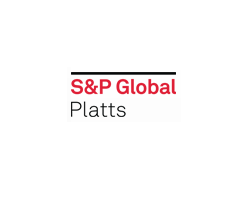Analysis: Met Coal Market Focusing on Chinese Demand After Golden Week Holiday

October 8, 2019 - Chinese demand for met coal in the spot seaborne market after the Golden Week holiday will focus on November laycan cargoes, with the level of buying determined by how China handles its import policy across the fourth quarter.
The market could move higher towards the year end on increased Chinese demand amid easing concerns over import quotas. Or the market could be driven lower in the less likely event of China further tightening import controls.
The CFR China market development could also impact FOB Australia markets in general.
FOB and CFR markets have been increasingly interlinked as China has become the most competitive destination for Australian coal. The spread between premium low-vol coal and premium mid-vol has widened in the FOB market just a few days after a similar phenomenon was seen on a CFR basis.
That spread has since steadied at elevated levels. In the past few days, prices have risen as traders have seen an opportunity to purchase November FOB cargoes in anticipation of clearing them through China customs in January, when new quotas were expected to become available.
Market participants said the risk of cargoes being unable to clear Chinese customs was lower towards the year end.
"We as end-users see reduced risks of buying seaborne cargoes with November laycan as that cargo will likely arrive at the northern Chinese ports by mid- or late December, right ahead of the reopening of the 2020 import quotas," a Hebei-based steel mill said.
Other end-users said there was room for negotiation with port authorities. "We still have two cargoes' volume left to reach the same total purchase volume as last year, and we are going to negotiate with the port for utilization of the quota, or it may impact our quota next year," a southern Chinese steel mill said.
In addition to easing fears over import quotas towards the year end, Chinese buyers have continued to see economic incentives to buy seaborne cargoes.
Based on S&P Global Platts assessments of domestic PLV prices, the arbitrage was estimated to be $35.68/mt, from a high of $45.00/mt on October 1. A Platts analysis found that observed transaction volumes in the spot market tended to surge when the import arbitrage was open.
"The current arb at over Yuan 200/mt ($28/mt)) appears very attractive to us. We are planning to buy at the current price levels with the remaining import quota in hand," a steel mill based in North China said.
According to Chinese customs data, imports of coking coal from January-August totaled 53 million mt, up 20% year on year. That, along with 220 million mt of thermal coal imports, meant an increase of 8.1% from in China's total coal imports over the period.
"This higher-than-projected coal import volume could ring the bell for the government, which might result in further tightened import controls for Q4. But whether or not total imports will be kept at the same level or lower year on year remains to be seen," a trader source said.
Spot transactions to China in the first nine months of 2019 totaled 30.5 million, compared with 31.5 million mt in the 2018 period, Platts data showed. Given the level of imports, one major steel maker said it was concerned about a possible halt to Chinese imports during the fourth quarter. "It is equally possible to see an import ban given how much has been imported so far and, for this reason, we are more cautious about the near-term market outlook."
An international trader said that given the high market volatility and the policy-associated risks, it would rather hold off building new positions until early next year.
China has been the clearing center for the seaborne met coal market, with an estimated 75% share of the spot market in 2019. That dominance has been reinforced by weaker steel market fundamentals in the rest of world.
Another factor is China's winter heating season policy, expected to be announced later this month. A tightening of output will result in lower crude steel production and, potentially, higher steel mill margins. In a positive steel mill margin environment, demand tends to favor higher quality steel raw materials.

